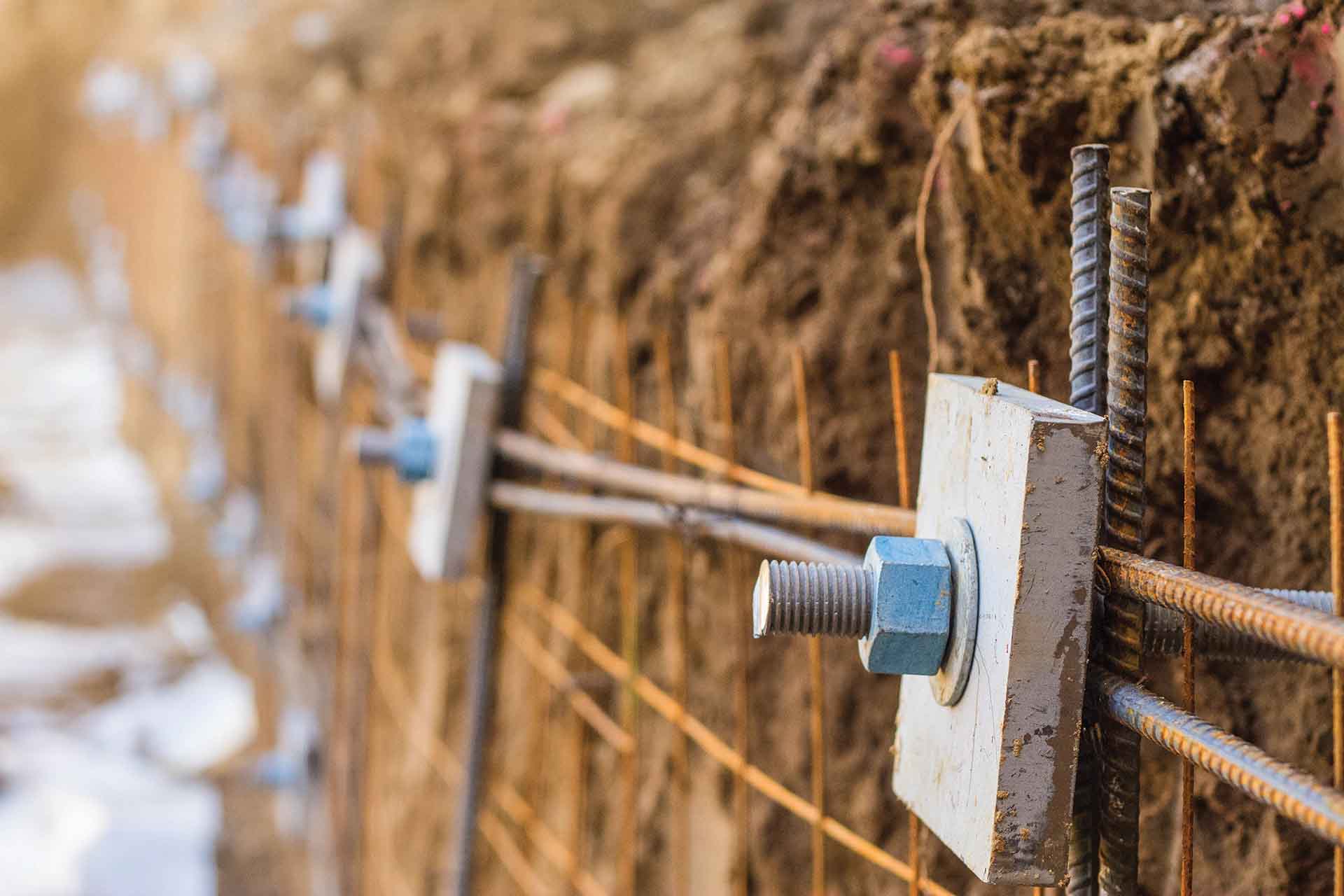Soil nail walls offer the following advantages over tieback walls as well as other top-down construction techniques:
-
Soil nail walls are more economical than conventional concrete gravity walls and are often more economical than tieback walls due to reduced wall facing requirements. There would likely be more soil nails than tiebacks for a given project, but this additional cost for the nails is outweighed by the difference in cost of a shotcrete facing versus a more substantial soldier pile, sheet-pile, or reinforced concrete wall detail.
-
Soil nails are typically shorter than tiebacks for similar wall heights so there will be reduced right-of-way (ROW) requirements.
- There is less impact to adjacent structures since soil nails are not installed with vibratory energy like soldier piles or sheet-piles.
- Overhead clearance requirements are less than driven soldier pile or sheet-pile wall construction. Soil nail walls can therefore be installed easily below bridges or other structures.
- There is no need to embed structural elements below the proposed ground surface elevation on the low side of the soil nail wall. Soldier pile and sheet-pile walls require minimum embedment depths for wall stability.
- Soil nail wall construction is typically quicker than other earth retention methods.
- Soil nail walls can be constructed in remote areas with smaller equipment.
- Soil nail walls have performed well during seismic loading events due to the overall system flexibility.
A helical soil nail typically consists of square shaft lead and extension sections with small diameter (6 to 8 inches) helix plates spaced evenly along the entire shaft length. The helical soil nail is installed by application of torque, similar to the installation of a helical tieback.
The helical soil nail is a passive bearing element, which relies on movement of the soil mass and active earth pressures to mobilize the soil shear strength along the nail. In contrast, a tieback is pre-tensioned to mobilize the soil shear strength around the helix plates. Excavation, soil nail installation and application of wall facing is completed in steps from the top of the wall downward.
Construction Methodology
Soil nail walls are constructed from the top down where the excavation proceeds. The construction sequence for a typical helical soil nail wall includes:
- Initial vertical excavation of about 3 to 5 feet deep depending upon design parameters and soil conditions
- Installation of the first row of helical soil nails to the required inclination angle, torque and embedment length
- Placement of drainage medium (if required)
- Placement of wall reinforcement and bearing plates
- Placement of shotcrete to the required design wall thickness
- After shotcrete has cured, repeat sequence for successive rows of soil nails. Continue process to the final design depth (wall height).

